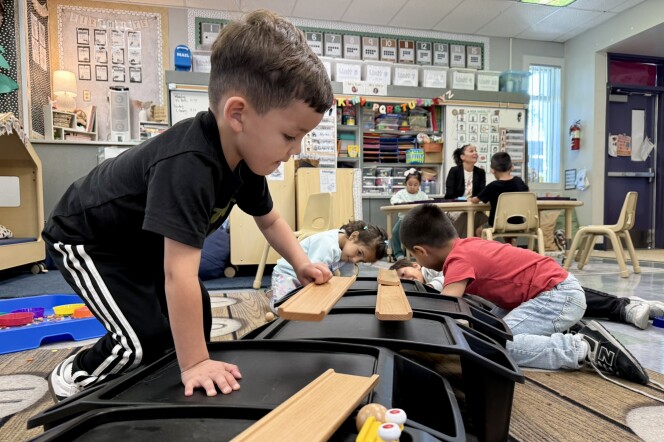With our free press under threat and federal funding for public media gone, your support matters more than ever. Help keep the LAist newsroom strong, become a monthly member or increase your support today.
Low-Income Communities Have Less Park Space Than More Affluent Neighborhoods. That's Starting To Change

The 51st Street Greenbelt Park project in North Long Beach has secured $2 million in funding to transform from a dirt lot near the Los Angeles River into a green space with trees, fitness equipment and plants that naturally remove pollutants from rainwater runoff.
Why it matters
Congressmember Nanette Barragán, who represents a large part of North Long Beach, helped secure the federal funding. She says half of L.A.'s population lives in neighborhoods without access to parks and open spaces.
"[Low-income and communities of color] have less than 10% of park acreage per resident than, say, more affluent areas in East Long Beach," she said. Last year, a report from the non-profit Trust for Public Land revealed that communities of color have 43% less park space than white neighborhoods.
About the 51st Street Greenbelt project
The park will have fitness equipment, a play area for kids, a natural walking trail and more. Barragán says it's important for "these neighborhoods to have green spaces for their kids, for [wellness], and for mental health reasons. She says "It's good for getting to know your neighbors."
How parks help with the climate crisis
Barragán noted that parks provide a cooling effect that help combat the urban heat island effect — when pavement, buildings and other surfaces absorb and retain heat.
"Having more tree canopy and shade — it's going to help reduce air pollution by sequestering carbon and other toxins and improve water quality by removing contaminants from stormwater runoff," she said. "So this is really a greater effort to [help] these communities combat the climate injustice that they have and the lack of green space."
What's next
Barragán's spokesperson Kevin McGuire says there's no timeline on the project, but it could be completed in five years. But Barragán expects an additional $15 million and a new round of community-funded projects for more urban parks later this year.
-
Salvador Plasencia was sentenced to federal prison for his role in the overdose death of actor Matthew Perry.
-
A new report finds enrollment in transitional kindergarten is rising in L.A. County, but community preschools are closing.
-
The region currently spends 90% of HUD dollars on permanent housing, but the feds capped it at 30%.
-
Weingart Center has been out of compliance for nearly four years, according to an LAist review. Audits found multiple failures to properly account for taxpayer money.
-
Critics say the current state-approved housing plan will make the city overcrowded.
-
Families can get notified when services reach their area and whether they qualify.












